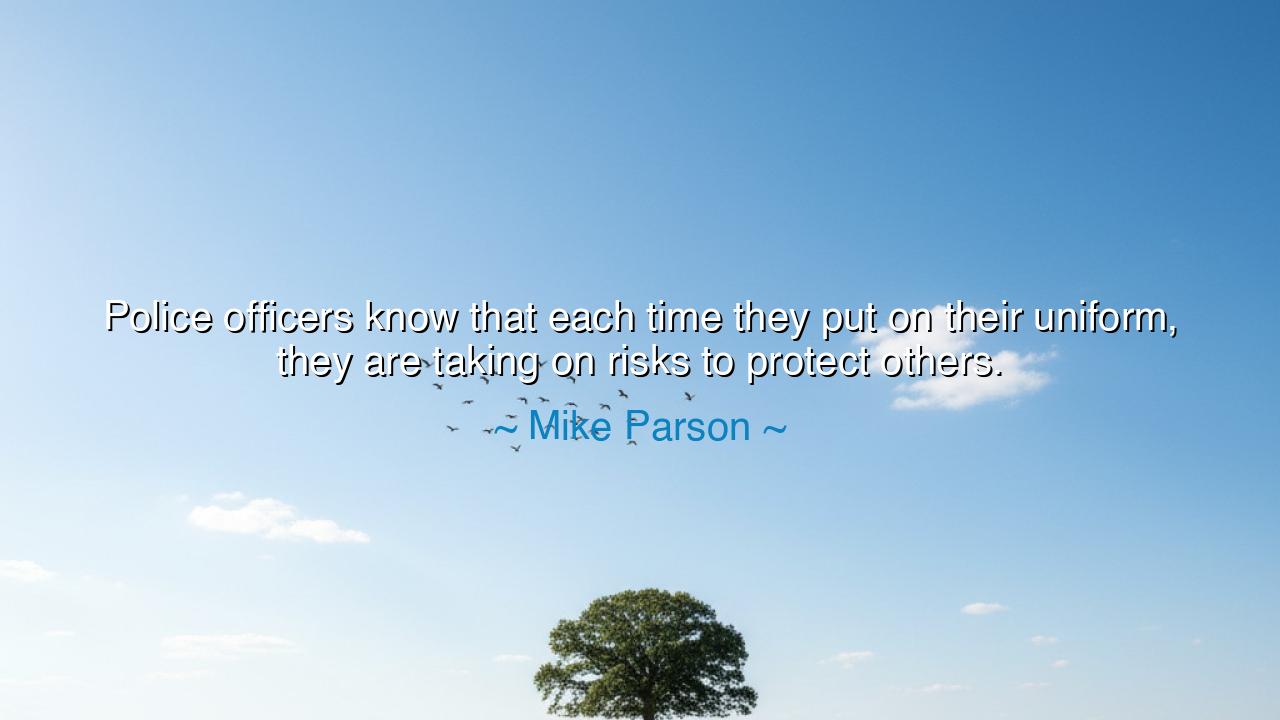
Police officers know that each time they put on their uniform
Police officers know that each time they put on their uniform, they are taking on risks to protect others.






The words of Mike Parson—“Police officers know that each time they put on their uniform, they are taking on risks to protect others.”—resound like a solemn oath, a recognition of the heavy burden that comes with service. They remind us that the uniform is not merely cloth and insignia, but a mantle of responsibility, woven with courage, sacrifice, and danger. To wear it is to declare: I place the safety of others above my own. In this sense, the quote is both a tribute and a truth—that those who step forward into this calling walk willingly into peril so that others may walk in peace.
The ancients revered the warrior who defended the city walls, the guardian who stood between chaos and order. For such men and women knew that to protect was to risk, and to risk was to love one’s people more than oneself. The uniform of the modern officer is the shield of old, the mark of one who has chosen to face what others flee. It is a sign not of privilege, but of danger embraced for the sake of duty. When an officer dons it, they accept that each day could be their last, yet they walk forward nonetheless.
History offers us countless examples of this sacrifice. On the morning of September 11, 2001, as flames and smoke rose from the towers of New York, police officers ran into the inferno while others fled. They knew the risks, yet they climbed stairs that led to collapse, guided not by hope of survival, but by duty to save lives. Many never returned, yet their courage saved countless souls. In them, Parson’s words find their most powerful proof: the uniform was not merely worn, it was honored with the ultimate price.
Yet even in quieter times, the risk remains. Every traffic stop, every call to a disturbance, every moment on patrol carries the possibility of danger. The world rarely sees the hidden courage in these moments—the split-second decisions, the silent prayers, the constant awareness that the next heartbeat could summon peril. To serve as an officer is to live with this knowledge, to choose service despite the shadow of risk. This is not weakness, but strength; not recklessness, but devotion.
Beloved listener, the meaning is clear: true service always carries sacrifice. Whether in the uniform of an officer, the robes of a healer, or the burdens of a parent, to protect others is to place oneself at risk. The heart of duty is not safety, but sacrifice. This is the lesson that Parson’s words call us to remember—that protection is not free, it is purchased by the courage of those who dare to stand in harm’s way.
What then should we learn for our own lives? We may not all wear the uniform of a police officer, but each of us is called in some way to protect, to serve, to risk for the sake of others. It may be in standing up for truth, in defending the vulnerable, in sacrificing time and comfort to safeguard those we love. The uniform is a symbol, but the spirit it represents can live in every heart. To live bravely is to accept risk for the sake of what is right.
So let Parson’s words guide us. Each time we put on the uniform of our duty—whether literal or symbolic—we take on risks not for ourselves, but for others. Let us live so that when history remembers us, it will say: they were not afraid to stand in danger’s path, they bore their risks with honor, and because of them, others walked in safety. For this is the essence of service, and the highest calling of humanity.






AAdministratorAdministrator
Welcome, honored guests. Please leave a comment, we will respond soon